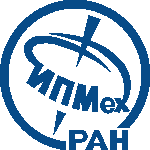
|
ИСТИНА |
Войти в систему Регистрация |
ИПМех РАН |
||
Interpretation of Displacement Fields on the Slopes of Shiveluch Volcano (Kamchatka) Obtained from SAR Interferometry Images from Two Orbitsстатья
- Авторы: Volkova M.S., Mikhailov V.O., Osmanov R.S.
- Журнал: Cosmic Research (English translation of Kosimicheskie Issledovaniya)
- Том: 62
- Номер: Supl 1
- Год издания: 2024
- Издательство: Pleiades Publishing, Inc.
- Местоположение издательства: New York, USA
- Первая страница: S157
- Последняя страница: S164
- Оригинальные версии: Интерпретация полей смещений на склонах вулкана Шивелуч (Камчатка), полученных по спутниковым радарным снимкам с двух орбит
- DOI: 10.1134/S0010952524601087
- Аннотация: We obtained new data on displacements on the slopes of the Shiveluch volcano in 2022 using synthetic aperture radar (SAR) images of the Sentinel-1A satellite for the period from May to October 2022, taken from the ascending 140A and descending 60D orbits. We identified three main regions of displacements, located on the eastern and western slopes and in the region of the pyroclastic flow formed during the eruption on August 29, 2019. From the images taken from two orbits, the displacements along the vertical were calculated. In displacements of the flow surface, the horizontal component is small, and the vertical subsidence amplitude reaches 150 mm. The flow thickness was estimated for 2021 and 2022. Together with the previously obtained estimates for 2020, the dependences of the flow surface subsidence rate on the thickness of the deposits were calculated. To interpret these displacements, we harnessed a thermomechanical model selecting parameters of porosity change with time. It is shown that the estimates of surface subsidence coincide with high accuracy with the SAR interferometry data for average values of displacement rates corresponding to a linear trend constructed from the correlation dependences “surface displacement velocity–thickness of the sediment layer.” In this case, the greater the thickness of the deposits, the more the porosity decreases. From 2019 to 2022, the porosity of deposits with a thickness of 10 m decreased by 0.97%; for 15 and 20 m, by 1.36%;and for 25 and 30 m, by 1.56%. The presence of a significant variance of real data around the found dependences indicates a large contribution of erosion processes. The model also suggests that the temperature of the volcanic rocks at the time of the eruption exceeded 600°С. The developed methods for determining and interpreting displacement fields can be used to study the thermomechanical parameters of pyroclastic flow deposits in other remote regions.
- Добавил в систему: Михайлов Валентин Олегович